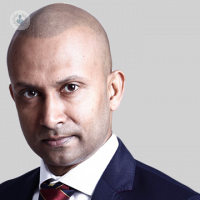Otoplasty: a step-by-step guide to the procedure
Autore:Surgery to get your ears pinned back has evolved in recent years, and it’s now possible to reshape the ears without cutting the cartilage entirely. In this article, consultant ENT and facial plastic surgeon Mr Anil Joshi explains how modern surgeons approach ear surgery and what kind of recovery patients can expect.

Surgery to get your ears pinned back is called an otoplasty or pinnaplasty, and it’s a relatively straightforward procedure. Our aim is to address the causes of prominent or “bat-like” ears:
- absence of antihelical folds: people with prominent ears usually lack these folds, so a key part of an otoplasty is to recreate these in our patients
- having a deep conchal bowl: this can push the ears outward, so we will try to make the bowl shallow where possible
- prominent earlobes: these cause the lobes to protrude forwards giving a cup-like feature. These can also be addressed in an otoplasty.
What happens during the procedure?
You’ll be placed on a headrest with both ears and your face exposed for the duration of the procedure.
We initially make markings behind the ears, in an ellipse or dumbbell shape. This marked skin is then removed. We then create flaps to gain wide access to the cartilaginous framework.
Our next task is to recreate the antihelical folds. We use suturing techniques if the cartilage is soft, or a combination of sculpting and suturing (stitching) if the cartilage is semi-hard. We use permanent or long-standing sutures placed in a “mattress” fashion and need approximately three of such sutures on each side to create the desired fold. All of the sutures are placed first, then tightened later on to get the desired effect.
The deep bowl is addressed in a similar way. We remove a piece of excess cartilage if absolutely be necessary and also pin back the cartilage to the mastoid bone behind, using a permanent suture.
Finally, the skin is closed using dissolvable sutures and a head bandage is applied for 5-7 days.
What happens afterwards?
Otoplasty is a day-case procedure so you’ll be sent home very soon after the procedure is complete. You’ll be given a week’s worth of antibiotics to prevent and combat any infections that might occur. Finally, after a week you’ll return to the clinic for a consultation to have the head bandage removed and assess the result.
We advise you to apply soft band around the ears to protect them whilst sleeping. Avoidance of contact sports for a couple months is helpful.


